WORLD CLASS COACHING
Spanish Style Possession Soccer Vol 1
By Philip Cauchi
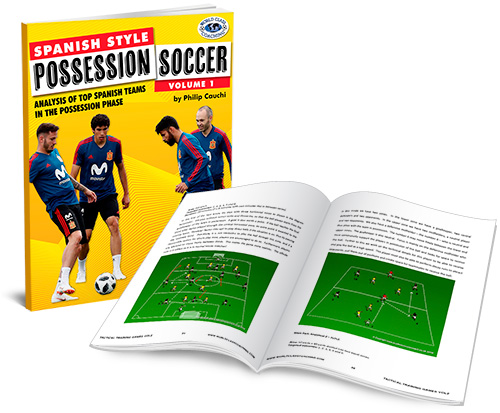
Table of Contents
PART ONE
Introduction
What is a Style of Play
Principles of Possession Play
PART TWO
Positional Characteristics During the Possession Phase
PART THREE
Training Methodology
The Power of the Rondo
Introduction
Spanish teams including the national side are renowned for dominating possession. It looks so simple to play when you are watching as a spectator, yet it is difficult to coach and master when developing a team playing using this style.
Circulating the ball at high speeds and with accuracy is something that can only be achieved with a well laid long term plan. A culture of excellence with a clear mission statement and vision should be implemented. Aims should be clarified and understood by all stakeholders. Within these aims, well-structured outcomes should emerge. Every outcome should serve us as a milestone towards reaching our target.
In the early stages of their development, young soccer players should acquire the basic motor skills. This should not only be limited to ball mastery, but also includes other capacities learned by playing and participating in different sports and physical activities. From a soccer perspective we should start by developing a solid base of mastering the ball that includes dribbling at different speeds, changing direction with the ball and applying feints and fakes. Kicking is not the same as passing. Passing is the execution of an action to displace the ball as worked out by two players with the intention of gaining a territorial advantage of some sort over our opponents (Verheijen, 2014).
Kicking can be developed as part of ball mastery, while passing can be developed as a means of tactical cooperation even at the younger ages. Situations of 4v1, 4v2, 3v1, etc. guarantee lots of repetition where players must think and re-think to reposition themselves in order to carry out the next soccer action.
In the latter stages of the players’ development, we move towards including playing with larger numbers. We now train in more complex situations that require faster and more accurate decision-making. Training in larger numbers is beneficial to develop the inter-relationship needed between players from different sectors of the team.
Once we have players who bear a high level of decision-making and technique, we will be in a position to put together a team that plays fluid and attractive soccer. At this stage players will feel that these movements come automatically as a result of a well-prepared long term programme in which they were properly coached to identify the when, why, where, and how to execute a soccer action. Furthermore, training will be carried out in a way that gets the creativity out of players. Players will be able to transform their pre-programmed choice of a soccer action into another soccer action if the tactical situation changes abruptly (what if).

There are situations in which players at every age should experience as a regular occurrence. Obviously at the younger ages, players will train with a higher numerical superiority such as 6v2 while using a larger area. Therefore, we allow our prospective soccer players more time and space on the ball. At the top level, time and space is very limited and players should thus train in situations of light numerical superiority, numerical parity and even in numerical inferiority. As defences are becoming harder to unlock, the most effective way to unlock compact defences is through playing quick combinations. This is the ultimate aim of a possession dominant style of play.
What is a style of play?
A style of play is a means of communication between players of the same team through specific collective behaviours (Davies, 2016). The style of play chosen by a particular club should strengthen the relationship between the players and get out the best performances from them. The chosen style of play should therefore be built on the characteristics of the players at the disposal of the coach (Casà Basile, 2015).
A team is an open and a living system, which is made up of different sub-systems – the players. All of the players have to interact with both their teammates, opponents as well as with other interferences such as referee decisions, the weather, spectators, etc. Each and every opponent plays the game in a different manner, a different style. Our players should thus be able to react, anticipate and execute quick decisions when playing against different teams and against different styles of play. A style of play should therefore be adjustable and allowed to grow, to adapt and to reach new heights (Mallo, 2015).
A style of play is not a short term project. Players should be nourished from an early age to play with confidence, as well as to develop their creativity and insight of the game. Establishing a club culture is therefore of upmost importance. The club should have a vision and a playing philosophy that gives our team an identity on the field of play.
The way we want to play should be clearly described and agreed between the players and the coaching staff. A well-defined training programme should show us where we currently are, our strengths and weaknesses, what we aim to achieve and how – the training process. It is thus imperative that training simulates situations that our players will encounter during a match (Casà Basile, 2015).
The coaching staff should plan training sessions which develop further the team’s strengths while minimizing its weaknesses. This way we are integrating our strengths to create an effective and fluid style of play. Let us take an example. If we have three very good midfielders, a striker who can hold and play the ball really well, and two inside forwards who are great at cutting inside with the ball, we should base our game on building up through the middle vertical channel were we are the strongest. However, we should be flexible. If we are finding it hard to verticalize centrally against opponents playing very deep and compact, we try to overload the ball side to isolate the opposite flank. This is known as overload to isolate (Davies, 2016), and through it we aim to switch the ball quickly to the weak side full back to receive and penetrate.
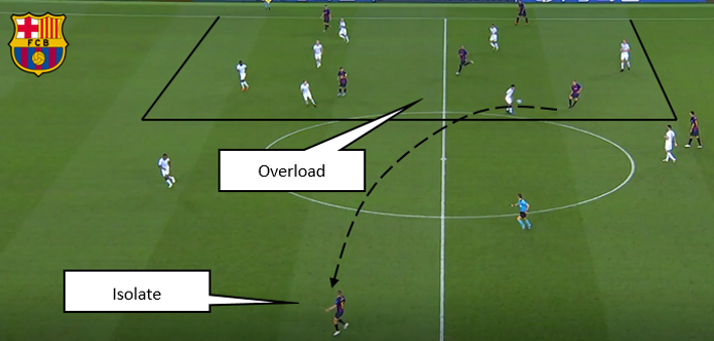
It is not just how technically and tactically good a player is to fit in our team. Identifying how a particular player interacts with his teammates is imperative. The interaction a player has with his teammates helps in getting the best out of his abilities.
Adaptation in the behaviour of our team will only be achieved if we train in situations that require the players to solve tactical problems collectively. Players should train in their natural positions with relation to their teammates positioned in the same sector and from nearby sectors. The coach should create different tactical scenarios for the players for them to solve together. On match day they will be required to do so under pressure from opponents who will be there to take the three points from us (Bordonau and Villanueva, 2018).
The principle of propensity within the Tactical Periodization training model refers to the need to train within contexts where we want a particular behaviour, either individually and/or as a group to develop. When doing so we should always take into account the playing characteristics of the players together with their strengths and weaknesses (Minutillo and Rafloski, 2015; Bordonau and Villanueva, 2018).
A system of play is not the same as a style of play. It is the strategic deployment of the players on the field of play and which is used to serve the style of play (Grima, 2017). As a matter of fact if we are playing using a 1-4-3-3 system of play, we know that we have four at the back, three midfielders and three forwards. However, the 1-4-3-3 can be interpreted in various ways. We can have the two lateral forwards staying either wide or more to the inside. We might have one or both full backs pushing forwards to give us more length and width. As a style of play we may opt to build-up directly bypassing the midfield, or we might use our midfield to attack down the middle channel with preference given to playing a short passing game. The style we choose depends on the strengths that we as a team have and how we will best exploit these strengths to our advantage to create scoring chances.
As an example if we have players in midfield who are of a higher technical level than our opponents (qualitative superiority), we can have dominance in keeping possession of the ball and verticalize. Through better positioning than our opponents (positional superiority), we can circulate the ball with speed and create gaps in their defence. This can be aided with numerical superiority around the ball and by having both short, medium and long passing options.
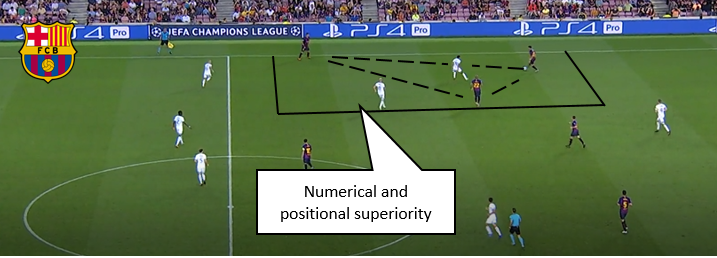
A possession style of play
Dominating possession is not an end in itself, but a strategy which a team may use to create space in order to play the ball close to the opponent’s goal to score goals. As with other game models, this requires a team to have the right mix of technical and tactical abilities. Players within a possession dominant style of play must have a high level of applied technique, be quick to read and anticipate tactical situations and also positional awareness.
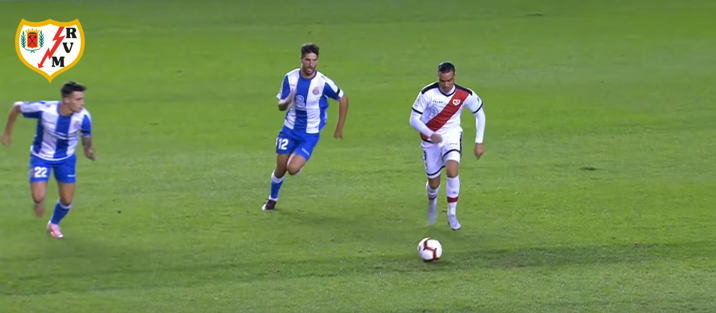
If we have the right mix of players to play with the style we will have a head start to what occurs during the match. The simple reason being that we have the ball at our feet and thus are able to dictate the game (Pascual, 2013). Having the ball at our feet conserves us energy and commits the other team chase us all over the pitch. This will tire out our opponents both physically and mentally, giving the sense that we are dominating the game.
When in possession of the ball and through good positional play we can disrupt the opposition’s structure and unbalance their team (Bordonau and Villanuova, 2018). Creating gaps in the opposition’s defence is the targeted outcome of possession play (Allison, 2013). Enlarging the area of play and having both width and length makes this more possible to achieve. Movement of players in front of the ball should be continuous, thus creating further passing angles and options to play the ball into more advanced zones and closer to our opponent’s goal (Davies, 2016). While circulating the ball our team should have a stable but flexible structure with the players rotating positions (mobility) while keeping the shape of the team intact. This prevents giving the opponents the space they need to hit us quick on the counter should we lose possession of the ball.
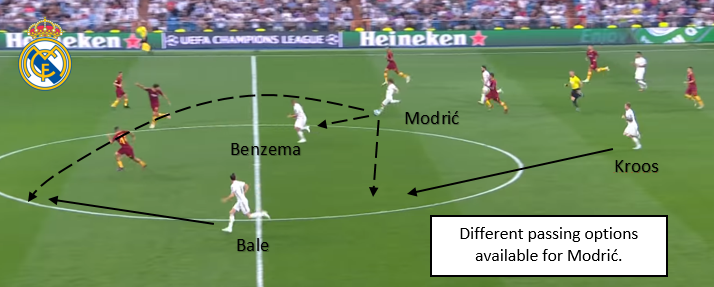
In order to surprise our opponents and never let them to settle in the game, we should continuously change our playing tempo, circulate the ball quickly and switch the point of attack rapidly when playing in verticality is not possible. In other words we must remain unpredictable, always having the opponents trying to guess our next move. Options to circulate the ball should exist both near and away from it and through having several passing lanes. It is very frustrating and extremely hard for the opponents to anticipate our moves if multiple playing options are continuously being created.
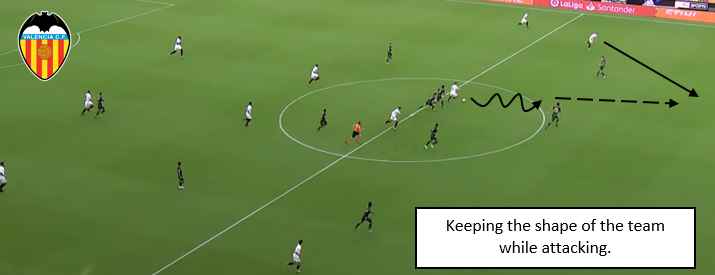
By dominating possession with quick short passes, if possession is lost we will be in good strategic positions to apply pressure on the ball. This can be achieved as a result of the short distances that exist between our players (Davies, 2013). It should become a habit to immediately press to win the ball back upon losing it. It is therefore imperative from this aspect to pay particular attention to the details of the distances and angles between the players and the structure of the team while still in the possession phase.
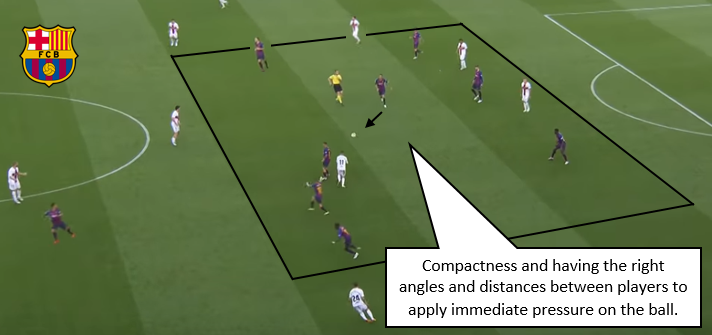
Passing is the most common technique used within a possession dominant style of play. The ball travels quicker than the players. A single pass may eliminate one, two and three players or an entire sector. Passing takes place during the moment of possession which is further divided into the build-up and scoring phases (Tamboer, 2016). The main difference in these two phases are the speed and intensity of football actions. Typically during the build-up, the frequency of passes is slower than during the scoring phase. The main reason being that there is more space and time available to play the ball.
Inside and around the penalty area shorter and faster passes are used to exploit the spaces created by pulling the defenders out of position. Together with this, dribbling is also used to attract defenders thus freeing teammates who will be in good positions to receive the ball unmarked.
The Principles of Possession Play
The principles of possession play should be clear, well-defined and understood by both the coaching staff and players. Should one of these pillars not be functioning, it will be hard for our team to dominate play and create scoring opportunities.
Positioning
The team should have the right players to occupy the key positions on the field of play. If these key positions are not properly occupied, dominating possession of the ball becomes very hard to achieve. Positional play helps the team to secure both the ball and verticalize to penetrate the opposition’s defence. In a side that aims to dominate possession, there should be players occupying each of the five vertical channels as shown in the diagram below. We should have at least a player giving us length up front to aid in achieving verticality and to also have players who give us depth in order to provide stability and security at the back.
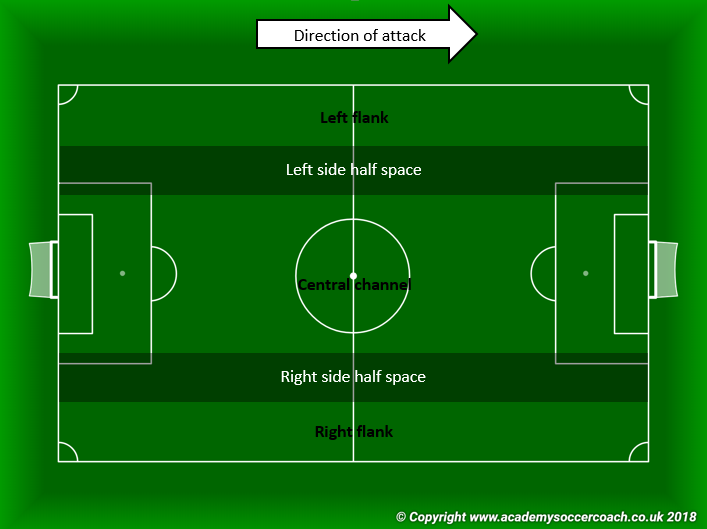
Penetration
The player giving the team length also creates vertical gaps in the opponent’s defensive structure. This provides our team in possession a higher chance to play the ball closer to our opponents’ goal and create scoring opportunities.
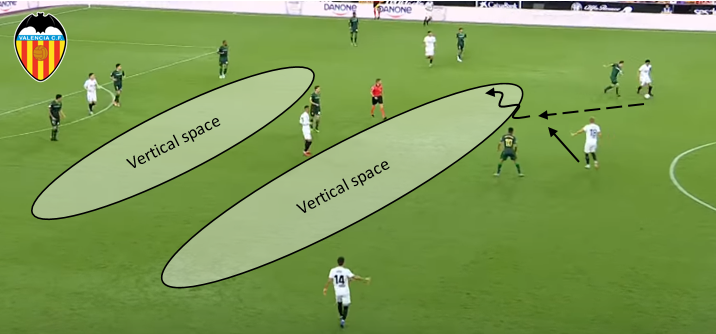
Length and depth
When our team is in possession we should create movements in front of the ball. This creates a point of reference for the team to play forward and create the necessary space to verticalize. Our forwards should position themselves as high as possible (Schreiner and Elgert, 2013).
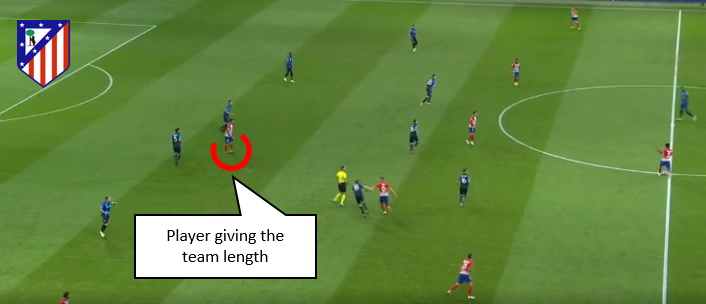
By having length we aim to stretch the opponents vertically and thus be able to play line breaking passes in order to advance the ball into higher zones up the field in order to score. Immediate support is imperative to allow the attack to be fluid.
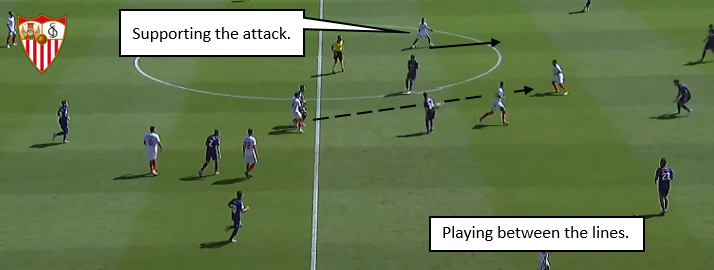
Depth means having players behind the line of the ball to offer support and also cover crucial zones on the field of play to prevent getting caught out of position if possession of the ball is lost.
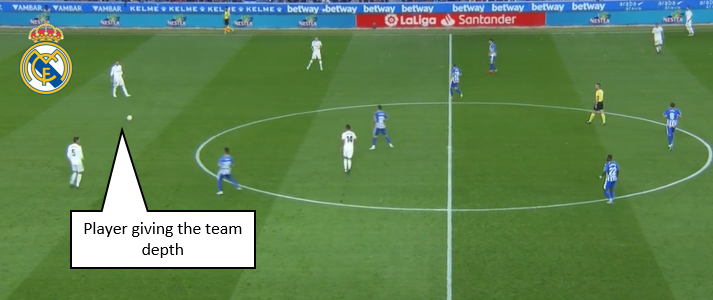
Width
Width is the horizontal placement of the players on the field of play. The aim of having width is to be able to stretch the opponents to create horizontal gaps in their defence from which we can verticalize. If we cannot play through we still have players wide with whom we can combine and play around the defence. In the image below the encircled players are giving the team width. The outside forward moved wide so to attract the fullback with him and enlarge the distance between the latter and the central defender. The ball was played directly to the midfielder exploiting this space from a deeper position.
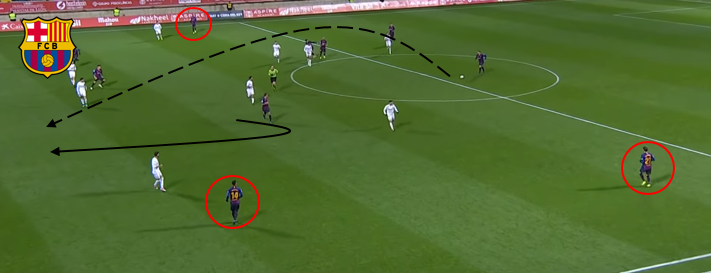
Mobility
It is the off-the-ball movement and rotation of positions with the aim of creating and exploiting space in order to advance the ball into higher zones up the pitch. Key to achieving this is to always have triangles to circulate the ball (Gutiérrez Mayor, 2012).
Preventive marking
When we are in possession of the ball we should be prepared in cases not to get caught when our team loses possession of the ball. Preventive marking means marking specific players in dangerous zones of the pitch who in the case of a negative transition may receive the ball and initiate a counter-attack (Maurizi, 2018). For effective preventive marking we need our players to be well positioned and be able to read and anticipate play. The image below gives us a perfect example of this by leaving a 2v1 situation at the back in favour of the attacking team. Notice also that there are two other players marking the zone in front of the penalty area. If the cross is cleared, they have a very good chance of winning the second ball, thus denying the opponents the space they require to initiate a counter attack.
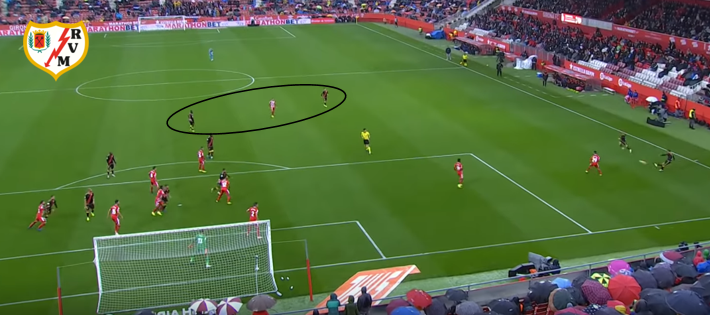
Communication
Communication is not only the verbal comments and instructions which players pass to each other during a match. Most of the communication that takes place in a soccer match is of a non-verbal type. If a central midfielder receives the ball, the other midfielders position themselves in a way to send non-verbal information to the ball carrier that they are ready to receive the ball. The central defenders also interpret this situation and make themselves available to receive the ball by creating the necessary angles and distances of support. This type of communication takes place continuously from kick-off until the final whistle. The players should therefore be trained to perceive and interpret correctly such situations upon which the correct decision and execution of soccer actions will be made.
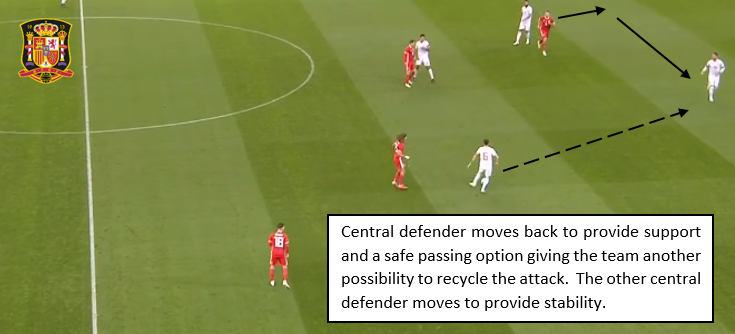
Movement of both teammates and opponents send information to the player on the ball about the situation and possible playing options (Van Kolfschooten, 2015). Verbal instructions provided by teammates also help depict the situation to the ball-carrier. Focus and paying attention to the correct stimuli during a match is therefore of upmost importance.
Players should take it a habit to continuously scan their surroundings as they are constantly receiving messages and assessing situations. Before receiving the ball, players should assess what options they have available and which of these put their team in a more favourable situation. Excellent communication between the players of a team makes the execution of soccer actions much more effective and mistakes are less likely to occur.
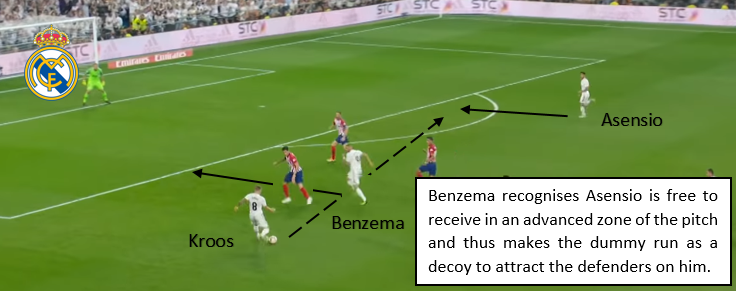
Throughout a match players execute hundreds of decisions. In Spain the tempo of soccer is high. This means that a high number of soccer actions are made each minute of the game (ibid). Typically when playing against foreign opposition, Spanish teams have higher percentage of possession which is the result of a large number of successful passes completed. To be able to dominate play throughout the game, a high level of mutual understanding is required. Soccer players playing in the same team must be able to speak the same soccer language so to successfully recognise cues and anticipate situations on the field of play. Having specific principles of play definitely helps in this matter.
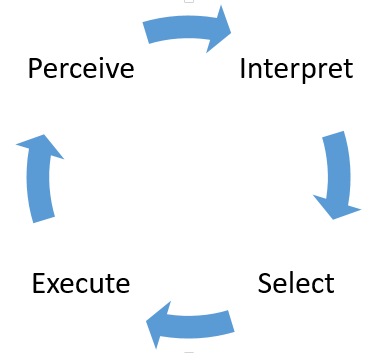
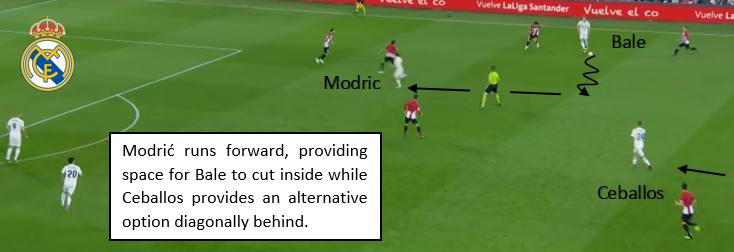
Body language is also a form of communication. If a player is in space with an open body stance, he is communicating with his teammate that he is ready to receive the ball.
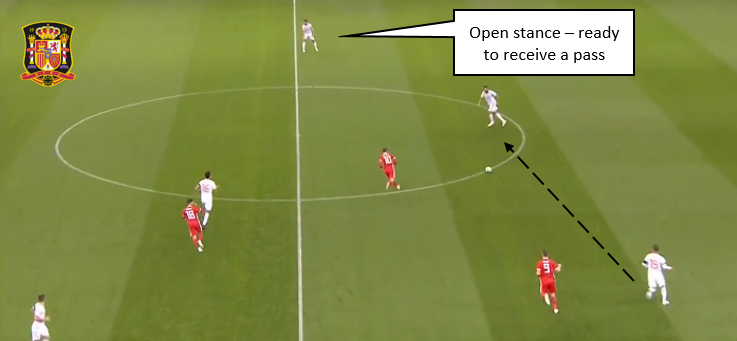
Well executed positional play enhances team communication. How can the players communicate effectively on the soccer field if they do not know the structure and positions during a particular moment of play? The positioning of team mates off-the-ball sends visual stimuli to the player on the ball that means that specific actions are possible to be completed while others cannot. If the player on the ball has no forward passing options, the players in front of the ball must move in order to create space either for themselves or their teammates so that verticality in play may be achieved.


